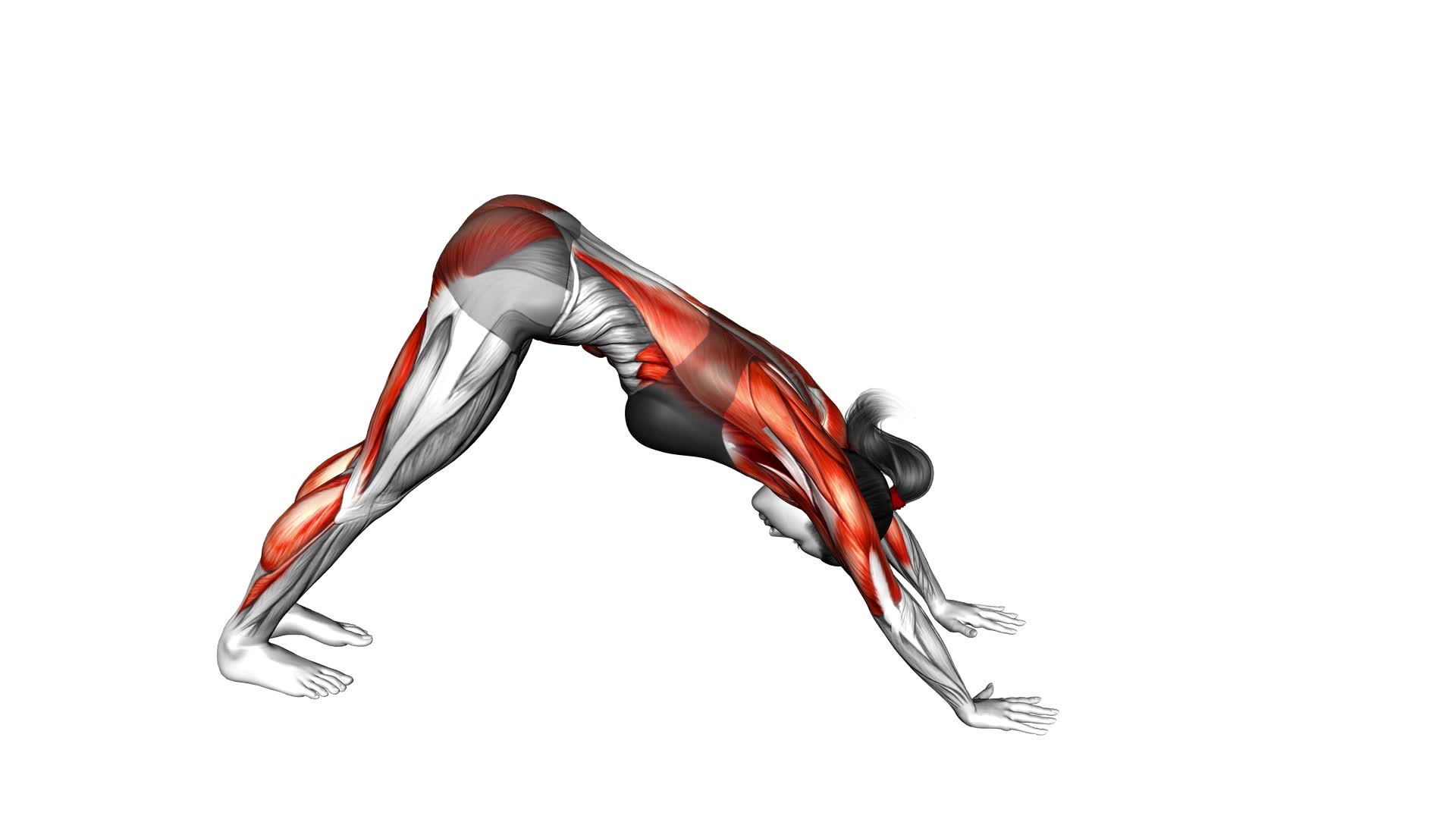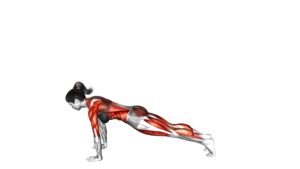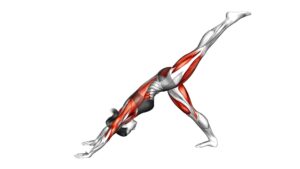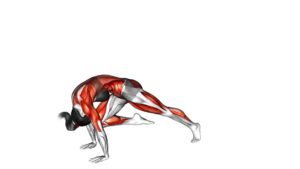Walk The Dog (female) – Video Exercise Guide & Tips

Are you ready to get active and bond with your furry friend? Look no further than the 'Walk The Dog (female) – Video Exercise Guide & Tips {613012}'!
Watch This Exercise Video
This informative and motivational article will show you the benefits of walking your dog, proper leash techniques, and warm-up exercises to get your heart pumping.
You'll also discover cardiovascular workout ideas, strength training exercises, and cool-down stretches for both you and your pup.
Get ready to have fun while staying fit together!
Key Takeaways
- Walking your dog provides physical exercise and improves overall health for your dog.
- Proper leash techniques, such as short leash control, help create a strong bond and prevent destructive behavior.
- Leash training basics, including clear communication and positive reinforcement, are essential for effective leash training.
- Warm-up exercises for both you and your dog are important to prevent injuries and create a fun bonding experience.
Benefits of Walking Your Dog
Why should you walk your dog? There are numerous benefits to dog walking, both for your furry friend and for yourself. Not only does it provide physical exercise for your dog, but it also has mental health benefits for both of you. Regular walks can help to reduce your dog's excess energy, preventing destructive behavior and promoting better overall health. Additionally, walking allows your dog to socialize with other dogs and humans, which can improve their social skills and reduce anxiety.
But it's not just your dog who benefits from these walks. Walking your dog can have a positive impact on your own mental health as well. Spending time outdoors and getting exercise can boost your mood, reduce stress, and increase feelings of well-being. It's a win-win situation for both of you!
Now that you understand the benefits of dog walking, let's move on to the next important topic: proper leash techniques. By using the right leash techniques, you can ensure a safe and enjoyable walk for both you and your dog. So, let's dive into the world of leash training and learn how to make your walks even better.
Proper Leash Techniques
When it comes to walking your dog, it's important to master proper leash techniques for a safe and enjoyable experience.
Short leash control is key to keeping your dog close and focused. Avoid leash pulling by using gentle corrections and positive reinforcement.
With leash training basics, you'll establish clear communication and create a strong bond with your furry companion.
Get ready to walk with confidence and control.
Short Leash Control
Maintain proper leash control for short walks with your dog.
When walking your dog on a short leash, it's important to consider the leash length and your dog's leash manners. Keep the leash short enough to maintain control but long enough to allow your dog some freedom to move and explore. A good rule of thumb is to keep the leash length around 4 to 6 feet. This will give you enough control to guide your dog without restricting their movement too much.
Additionally, it's crucial to teach your dog proper leash manners, such as walking beside you and not pulling or tugging. Consistency and positive reinforcement are key when training your dog to walk politely on a short leash.
Avoid Leash Pulling
To avoid leash pulling and ensure proper leash techniques, it's essential to establish clear communication and boundaries with your dog. Here are three tips to help you achieve leash training progress and utilize positive reinforcement techniques:
- Use a short leash: A shorter leash gives you better control over your dog's movements and prevents them from pulling. This allows you to guide your dog and redirect their attention when needed.
- Practice loose leash walking: Encourage your dog to walk beside you without tension on the leash. Reward them with treats or praise when they maintain a relaxed leash. This positive reinforcement technique reinforces the desired behavior.
- Be consistent and patient: Leash training takes time and consistency. Stay calm and composed, rewarding your dog for their progress and redirecting their attention when they start to pull. With consistent training and positive reinforcement, your dog will learn to walk beside you without pulling on the leash.
Leash Training Basics
Establishing clear communication and boundaries is crucial for effective leash training, ensuring that you and your dog can walk together with proper leash techniques. Leash training is an important aspect of responsible dog ownership, as it promotes safety and control during walks.
To start leash training, choose a well-fitting, comfortable leash and collar or harness for your dog. Begin by teaching your dog to walk by your side using the 'heel' command. Use positive reinforcement techniques, such as treats and praise, to reward your dog for walking calmly beside you.
Practice short training sessions in a distraction-free environment and gradually increase the level of distractions as your dog becomes more comfortable. Remember to be patient and consistent in your training approach.
With time and practice, your dog will learn to walk politely on a leash, making your walks enjoyable for both of you.
Warm-up Exercises for You and Your Dog
Before starting your walk, warm up both yourself and your dog with a series of exercises. This will help prepare your muscles and joints for the activity ahead and prevent any potential injuries. Here are three warm-up exercises that you can do together with your furry friend:
- Jogging: Start by jogging in place for a few minutes to get your heart rate up. Then, slowly begin to jog around your yard or in a nearby dog-friendly park. This will warm up your leg muscles and get your dog excited and ready for the walk.
- Stretching: Perform some simple stretches to loosen up your muscles. You can do leg swings, arm circles, and side bends. Encourage your dog to mimic your movements by stretching their limbs and torso. This will increase their flexibility and reduce the risk of stiffness.
- Agility drills: Set up a mini obstacle course in your backyard using cones, hoops, and small hurdles. Guide your dog through the course, encouraging them to jump over obstacles, weave through cones, and crawl under hoops. This will improve their coordination and agility, making the walk more enjoyable for both of you.
Now that you and your dog are warmed up and ready to go, it's time to move on to the cardiovascular workout ideas.
Cardiovascular Workout Ideas
Looking for some ideas to get your heart pumping and improve your cardiovascular fitness? High-Intensity Interval Training (HIIT) can be a great option for maximizing your workout in a short amount of time.
With bursts of intense exercise followed by short periods of rest, HIIT is an effective way to burn calories and improve your overall cardiovascular health.
If you prefer something with less impact on your joints, consider low-impact cardio options like swimming, cycling, or using an elliptical machine. These activities provide a great cardiovascular workout while minimizing stress on your joints.
High-Intensity Interval Training
Get ready to amp up your cardiovascular workout with high-intensity interval training (HIIT) exercises. HIIT workouts are a great way to burn calories, improve your endurance, and boost your overall fitness levels. Here are three effective HIIT exercises to incorporate into your routine:
- Burpees: Start in a standing position, then squat down and place your hands on the floor. Jump your feet back into a plank position, perform a push-up, then jump your feet back to your hands. Stand up and jump explosively into the air. Repeat for a set amount of time or repetitions.
- Mountain climbers: Begin in a plank position, then alternate bringing your knees towards your chest as if you were climbing a mountain. Keep your core engaged and maintain a quick pace throughout the exercise.
- High knees: Stand with your feet hip-width apart, then rapidly lift your knees towards your chest while jogging in place. Focus on maintaining a fast pace and lifting your knees as high as possible.
Now that you've learned some high-intensity interval workout ideas, let's move on to the next section and explore low-impact cardio options.
Low-Impact Cardio Options
Try incorporating low-impact cardio exercises into your routine for a gentle yet effective cardiovascular workout.
Low impact exercise alternatives are great for those who want to protect their joints or are recovering from an injury.
Walking is a fantastic option that can be easily modified to increase intensity. Find walking routes for dogs in your area to make it a fun activity for both you and your furry friend.
Another low-impact exercise option is swimming. It provides a full-body workout without putting stress on your joints.
Cycling is also a great low-impact cardio exercise that can be done indoors on a stationary bike or outdoors on a scenic route.
Remember, even low-impact exercises can help improve your cardiovascular health and overall fitness level.
Strength Training With Your Dog
You can enhance your strength training routine by incorporating exercises with your dog. Not only will you be able to bond with your pet, but you'll also be getting a great workout in the process. Here are three dog-friendly workouts that will help you build strength and have fun with your furry friend:
- Squat and Fetch: Start by holding a ball or a toy in your hand. As you squat down, throw the ball or toy for your dog to fetch. As your dog retrieves the item, stand back up and repeat the squat. This exercise targets your legs, glutes, and core while also engaging your dog in a game of fetch.
- Plank and Paw: Get into a plank position with your elbows on the ground and your body in a straight line. Encourage your dog to come over and place their paws on your back. Hold the plank position for as long as you can, engaging your core and upper body strength. This exercise not only strengthens your core, but it also helps improve your dog's balance and stability.
- Lunges and Leash Pulls: While holding onto your dog's leash, step forward into a lunge position. As you lunge, gently pull your dog towards you. Alternate legs and repeat the lunge on the other side. This exercise targets your legs, glutes, and core while also providing resistance for your dog, helping to strengthen their muscles as well.
Incorporating these dog-friendly workouts into your strength training routine won't only benefit you physically but also strengthen the bond between you and your pet. So grab your dog and get ready to sweat together!
Cool-down Stretches for You and Your Dog
After completing your dog-friendly workouts, it's important to incorporate cool-down stretches for both you and your dog. Just like humans, dogs benefit greatly from stretching after exercise. These cool-down stretches help to relax their muscles, improve flexibility, and reduce the risk of injury.
One of the best ways to start the cool-down session is by performing some gentle warm-up exercises for your dog. This can include walking at a slower pace or having your dog perform simple commands, such as sit or down. These exercises help to gradually decrease their heart rate and bring their body temperature back to normal.
Once your dog is warmed up, you can move on to the cool-down stretches. Start by gently massaging your dog's muscles, focusing on their legs and back. This not only helps to relax them, but it also allows you to check for any signs of soreness or discomfort. You can then proceed to stretch their muscles by gently extending their legs forward and backward or by encouraging them to stretch in a downward dog position.
Stretching has numerous benefits for dogs. It helps to increase their range of motion, improve circulation, and prevent muscle imbalances. Regular stretching can also aid in preventing injuries and promote faster recovery after exercise.
Frequently Asked Questions
How Long Should I Walk My Dog Each Day?
To keep your furry friend healthy and happy, it's important to walk your dog every day. The optimal walking duration varies depending on the breed. Larger, more active breeds may require longer walks, while smaller breeds may be content with shorter ones.
Regular walks have numerous benefits for both you and your dog. They help to maintain a healthy weight, improve cardiovascular health, and provide mental stimulation.
Can Walking My Dog Help With Weight Loss?
Walking your dog can definitely help with weight loss. It's a great way to incorporate your furry friend into your fitness routine.
Not only does it provide exercise for both you and your dog, but it also offers a range of benefits. Dog walking benefits include increased physical activity, improved cardiovascular health, and reduced stress levels.
What Are Some Common Mistakes to Avoid When Walking My Dog?
When walking your dog, it's important to avoid common mistakes that can hinder the effectiveness of your workout.
First, make sure you have proper dog walking techniques, such as using a comfortable leash and maintaining good posture.
Secondly, focus on leash training tips to ensure your dog walks calmly beside you without pulling.
By avoiding these mistakes, you'll have a more enjoyable and effective dog walking experience.
Keep up the good work!
Are There Any Specific Breeds That Require More Exercise Than Others?
When it comes to specific breed needs, exercise requirements can vary. Some breeds require more exercise than others due to their energy levels and natural instincts.
For example, high-energy breeds like Border Collies and Australian Shepherds need plenty of physical activity to keep them happy and healthy.
On the other hand, low-energy breeds like Bulldogs and Basset Hounds may require less exercise.
It's important to research and understand your dog's breed to ensure you're meeting their specific exercise needs.
Can I Walk My Dog in Extreme Weather Conditions?
Yes, you can walk your dog in extreme weather conditions, but it's important to take precautions.
When it's hot outside, make sure to walk your dog early in the morning or late in the evening to avoid the hottest part of the day. Provide plenty of water breaks and walk in shaded areas.
In cold weather, protect your dog with a coat or sweater and avoid icy or slippery surfaces.
Always prioritize your dog's safety and comfort during walks.
Conclusion
In conclusion, walking your dog isn't only beneficial for their health, but also for your own. By using proper leash techniques, warming up before the walk, incorporating cardiovascular exercises, and even strength training with your furry friend, you can both stay fit and active.
Remember to end your walk with cool-down stretches to prevent any muscle soreness. So grab that leash, put on your walking shoes, and enjoy the many benefits of walking the dog!

Author
Years ago, the spark of my life’s passion ignited in my mind the moment I stepped into the local gym for the first time. The inaugural bead of perspiration, the initial endeavor, the very first surge of endorphins, and a sense of pride that washed over me post-workout marked the beginning of my deep-seated interest in strength sports, fitness, and sports nutrition. This very curiosity blossomed rapidly into a profound fascination, propelling me to earn a Master’s degree in Physical Education from the Academy of Physical Education in Krakow, followed by a Sports Manager diploma from the Jagiellonian University. My journey of growth led me to gain more specialized qualifications, such as being a certified personal trainer with a focus on sports dietetics, a lifeguard, and an instructor for wellness and corrective gymnastics. Theoretical knowledge paired seamlessly with practical experience, reinforcing my belief that the transformation of individuals under my guidance was also a reflection of my personal growth. This belief holds true even today. Each day, I strive to push the boundaries and explore new realms. These realms gently elevate me to greater heights. The unique combination of passion for my field and the continuous quest for growth fuels my drive to break new ground.



